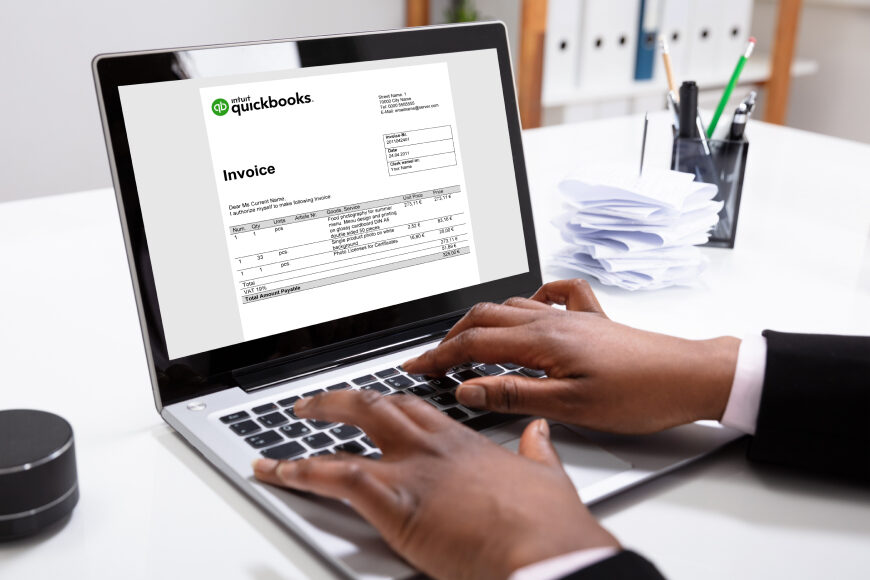In the fast-paced world of finance and accounting, where every dollar counts, QuickBooks has emerged as the unsung hero for businesses of all sizes. With its powerful suite of features and user-friendly interface, QuickBooks simplifies financial management tasks and streamlines bookkeeping processes.
Among quickbooks arsenal features, one particular weapon stands out: credit memos. These magical documents have the power to tame unruly balances, right financial wrongs, and keep the delicate balance of transactions in check.
What is a Credit Memo?
A credit memo, also called a credit note, is a document issued by a seller to a buyer, reducing the amount owed. It serves as an adjustment for returns, refunds, discounts, or other deductions related to financial transactions in systems like Quickbooks, which can help you efficiently manage “Undeposited Funds In Quickbooks.” Functioning as a negative invoice, it updates the customer’s account balance accurately.
Benefits of Credit Memo in QuickBooks
Credit memos in QuickBooks offer numerous advantages for businesses, simplifying financial management and improving customer service. Here are some key benefits of QuickBooks:
Credit memos ensure transparent and accurate records of customer adjustments, preventing errors and discrepancies in financial reporting.
- Efficient Customer Service:
Streamlining returns, refunds, or exchanges with credit memos enhances customer service and fosters positive customer experiences.
Credit memos reflect adjustments in financial statements, providing a realistic view of revenue, liabilities, and overall financial health.
- Streamlined Application Process:
QuickBooks simplifies applying credit memos to customer accounts, saving time and accurately recording credit adjustments.
- Enhanced Reporting Capabilities:
QuickBooks’ robust reporting features allow businesses to track credit memos effectively and manage accounts receivable more efficiently.
- Integration with Accounting Processes:
Credit memos seamlessly integrate with other accounting processes, ensuring accurate financial records and compliance with accounting standards.
By leveraging credit memos in QuickBooks, businesses can experience improved financial organization, customer satisfaction, and decision-making efficiency.
Different Types Of Credit Memos In QuickBooks
Credit memos in QuickBooks offer businesses the flexibility to handle various scenarios and adjust customer accounts effectively. Let’s explore some of the different types of credit memos available in QuickBooks:
Used for common adjustments like returns, refunds, pricing changes, billing errors, or promotional credits, helping maintain accurate records and customer satisfaction.
Ideal for regular adjustments, such as monthly service credits or ongoing discounts, offering automatic adjustments at specified intervals.
Applied for specific discounts or allowances, reducing the customer’s outstanding balance accordingly.
Used to cancel or void previously issued credit memos, ensuring accurate records and preventing unintended impacts on customer accounts.
What Information Is Needed For a Credit Memo?
When creating a credit memo, certain information is essential to ensure accuracy and clarity. The following information is typically needed when preparing a credit memo:
- Customer Information: Include name, address, and contact details.
- Credit Memo Number: Assign a unique identifier for tracking purposes.
- Date: Specify the issuance date of the credit memo.
- Item or Service Details: Provide a clear description, including quantity and price.
- Reason for Credit: State the purpose of the credit, e.g., return, refund, discount, etc.
- Amount: Clearly indicate the credit amount.
- Terms and Conditions: Include any relevant conditions or restrictions.
- Supporting Documentation: Attach related invoices or receipts for validation.
- Authorized Signatures: Obtain approval from relevant parties.
How to Create a Credit Memo in QuickBooks?
To create a credit memo in QuickBooks, follow these step-by-step instructions:
- Launch QuickBooks and log into your account.
- Navigate to the “Create” tab, typically located in the top menu bar.
- From the available forms list, select “Credit Memo.”
- Enter the customer’s name and contact information in the designated fields. You can search for an existing customer or create a new one if necessary.
- Specify the amount of the credit memo. This can be the full amount or a partial refund, depending on the situation.
- Add any relevant notes or comments regarding the credit memo, such as the reason for the refund or any additional details.
- Click on the “Save” button to save the credit memo. This action will record the credit memo in QuickBooks.
- After saving, you can view and manage the credit memo by accessing the “Invoices and Credit Memos” section in QuickBooks.
How to Apply Credit Memos to an Invoice in QuickBooks?
To apply credit memos to an invoice in QuickBooks Online, follow these steps:
- Log in to your QuickBooks Online account.
- Click on the “Sales” option in the left navigation bar.
- Select the “Customers” tab from the top menu.
- Locate and click on the name of the customer for whom you want to apply the credit memo.
- In the customer’s profile, find the invoice to which you want to apply for the credit and click on the “Receive payment” button.
- In the “Receive Payment” window that appears, enter the relevant information:
- Payment date: Specify the date of the payment.
- Payment method: Select the appropriate payment method from the dropdown menu.
- Reference no.: If necessary, enter a reference number for the payment.
- Deposit to account: Choose the account where you want to deposit the payment.
- In the “Outstanding Transactions” section, select the correct invoice for payment.
- In the “Credits” section, verify that the correct credit memo is selected.
- Once you have confirmed the selections, save it and click the close button to apply the credit memo to the invoice.
By following these steps, you will successfully apply a credit memo to an invoice in QuickBooks Online.
How to Send a Credit Memo in QuickBooks?
To send a credit memo in QuickBooks, please follow these steps:
- Log in to your QuickBooks account and navigate to the “Invoices and Credit Memos” tab.
- Locate and select the specific credit memo you wish to send to a customer.
- Click on “Send”.
- A dialogue box will appear, prompting you to enter the customer’s email address.
- Enter the customer’s email address in the provided field.
- Double-check the email address for accuracy, ensuring there are no typos or errors.
- Once you have verified the email address, click on the “Send” button once again to initiate the sending process.
QuickBooks will now send the credit memo to the customer’s email address. The customer will receive the email containing the credit memo and can then review it. The customer can make any necessary adjustments to their account, including creating a Journal Entry in QuickBooks if needed, based on the information provided in the credit memo.
By following these steps, you can easily send a credit memo to a customer using QuickBooks.
How to Track Credit Memos in QuickBooks?
Tracking credit memos in QuickBooks is a simple process. Here are the steps to follow:
- Open QuickBooks and log in to your account.
- From the main dashboard, navigate to the “Invoices and Credit Memos” tab.
- Once you are on the “Invoices and Credit Memos” page, locate the “Filter” option.
- Click on the “Filter” option to open the filtering settings.
- In the filtering settings, find and select the “Credit Memos” tab.
- Next, locate the “Show” option and click on it.
- From the drop-down menu that appears, select “All” to view all credit memos in your QuickBooks account.
- After applying the necessary filters, you will see a list of credit memos displayed on the screen.
- Now, you can view, edit, and manage the credit memos as needed. Click on a credit memo to open it and make any necessary changes or updates.
- To further manage credit memos, you can perform actions such as applying them to invoices, deleting them, or printing them for your records.
By following these steps, you can effectively track credit memos in QuickBooks and keep accurate records of your transactions.
How to Create Credit Memo for Items That Were Returned?
Here are the steps to create a credit memo for items that were returned:
- Access the customer menu in your accounting software or system.
- Look for the option labeled “Create Credit Memos” or “Refunds” and click on it.
- In the “Customer: Job” section, select the customer from the drop-down menu for whom the credit memo is being created.
- Enter the details of the returned items in the designated area on the right side of the screen. Include information such as the item name, quantity, and any relevant notes.
- After entering the necessary information, click on the “Save and Close” button to save the credit memo.
- Locate the “Available Credit” window or section in the software.
- Choose the appropriate option based on your specific situation:
- Retain as an available credit: Select this option if you want the credit to be maintained as a negative balance in your register. This credit can be used to pay for future transactions, helping you manage your financials effectively, including contributions to “Retained Earnings In QuickBooks.”
- Give a refund: Choose this option if you prefer to issue a refund to the customer for the returned items.
- Apply to an invoice: If the customer has an outstanding invoice, you can select this option to apply the credit toward that specific invoice.
- Once you have selected the desired option, click on “Ok” or “Save” to finalize the credit memo and complete the process.
Please note that the steps may vary slightly depending on the accounting software or system you are using. It is advisable to consult the documentation or help resources provided by your specific software for more accurate instructions tailored to your setup.
How to Issue a Refund Check When There Is an Overpayment?
Here are the simplified steps for issuing a refund check when there is an overpayment:
- Open your accounting software and go to the banking menu.
- Select “Write Checks” and enter the necessary information.
- Link the check to the overpayment transaction, if available.
- Save and close the check.
Alternatively:
- Open your accounting software and go to the customer section.
- Select “Received Payments” and locate the overpayment transaction.
- Choose the refund option and save the transaction.
- Issue the refund check by entering the required details and clicking “OK.”
How to Use Credit Memos in QuickBooks Online or Desktop?
Navigating QuickBooks can sometimes be confusing, especially when it comes to creating a credit memo. Here are the steps to find where you can create a credit memo:
For QuickBooks Online:
- Open QuickBooks Online and navigate to the Sales tab located in the left sidebar.
- Click on Customers in the Sales menu.
- Look for the Transactions list and locate the credit memo. You can click on it to open the credit memo.
- Once the credit memo is open, you have the option to Print or Preview it, as well as to print checks, by clicking on the corresponding buttons at the bottom of the page.
For QuickBooks Desktop:
- Launch QuickBooks Desktop and access the Customers menu.
- Click on the Customer Center within the Customers menu.
- In the Customer Center, navigate to the Transactions tab.
- Right-click on “Credit Memos” from the list of transactions.
- Double-click on the desired credit memo from the list to open it.
- Once the credit memo is open, you can choose to print it by selecting the appropriate print option.
How to Delete a Credit Memo in QuickBooks Online?
To delete a credit memo in QuickBooks Online:
- Go to “Customers” and select “Customer Center.”
- Choose the customer with the credit memo.
- Click “Edit” and select “Void Credit Memo” or “Delete Credit Memo.”
- Confirm the deletion.
When to Use Credit Memos?
Credit memos are typically used in the following situations:
- Returns or Refunds: When a customer returns a product or requests a refund, a credit memo can be issued to offset the amount owed to the customer.
- Overpayments: If a customer accidentally overpays or makes an excess payment, a credit memo can be created to apply the extra amount as a credit towards future purchases.
- Adjustments or Discounts: Credit memos can be used to adjust or provide discounts on invoices for various reasons, such as correcting billing errors or offering promotional discounts.
- Allowances or Rebates: Credit memos can be used to provide allowances or rebates to customers as a form of compensation or incentive.
Using credit memos helps maintain accurate records and ensures that customer accounts reflect any adjustments or credits owed to them.
Managing or Troubleshooting Credit Memos in QuickBooks
Managing or troubleshooting credit memos in QuickBooks is essential for accurate accounting and customer transactions. Follow these simple steps to make changes or troubleshoot credit memos, ensuring precise adjustments to customer accounts.
- Go to the Invoices and Credit Memos tab.
- Select the credit memo that you want to edit.
- Click Edit.
- Make necessary changes.
- Save the credit memo.
The customer’s account will be adjusted accordingly.
Consequences of Not Using Credit Memos in Businesses
Neglecting credit memos can lead to several adverse outcomes for businesses:
- Inaccurate Financial Records:
Failing to utilize credit memos may result in discrepancies in financial statements, hindering decision-making based on unreliable data.
- Customer Dissatisfaction:
Without credit memos, handling returns, refunds, or discounts can cause delays and confusion, negatively impacting customer satisfaction and relationships.
- Difficulty in Tracking Adjustments:
The absence of credit memos makes it challenging to track and reconcile customer account adjustments, leading to errors and inefficiencies, especially when managing financial transactions in systems like QuickBooks, which are designed to facilitate efficient “Reconciling In QuickBooks.”
- Inefficient Financial Management:
Without credit memos, businesses may resort to manual workarounds, increasing administrative burden and decreasing productivity.
Not using credit memos may result in non-compliance with accounting standards, leading to potential penalties during audits.
- Lack of Insights and Analysis:
Neglecting credit memos hampers data analysis, preventing businesses from making informed decisions and developing effective strategies.
Conclusion
In QuickBooks, credit memos are vital for accurate customer account adjustments and financial record-keeping. They provide benefits like efficient customer service, clear financial insights, and seamless integration with accounting processes. Understanding the types and steps involved empowers businesses to manage credit adjustments effectively and maintain financial precision.

![Unlocking Ahrefs Premium: Get Ahrefs Premium Accounts [100% Free]](https://s44815.pcdn.co/wp-content/uploads/2023/10/Ahrefs-Free-Premium-accounts-2023-330x250.webp)



















